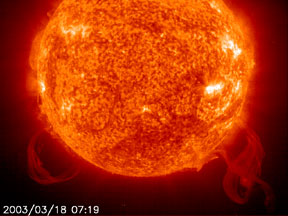These two large prominences (lower right and lower left) erupted from the Sun in March 2003. This ultraviolet image was captured by the SOHO spacecraft.
Click on image for full size
Image courtesy SOHO (NASA & ESA).
Solar Prominence
Large impressive loop-like structures on the edge of the solar disk sometimes
stand out brightly against the dark background of space. Though these structures,
called "prominences", appear to be very bright and hot, they are actually hundreds
of times cooler and denser than the surrounding gases in the Sun's corona or
outermost
atmosphere.
Filaments are dark string-like features that snake across regions of the solar
disk. They are actually prominences that are silhouetted against the much brighter
solar surface.
Filaments and prominences can remain stable for weeks or even months. Then,
without warning, these structures can erupt and blow large amounts of gas and
plasma out into space. Erupting prominences are closely associated with an
important
space weather event called a Coronal Mass Ejection (CME).
You might also be interested in:
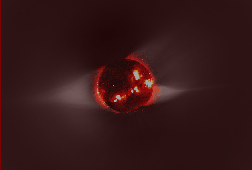
Rising above the Sun's chromosphere , the temperature jumps sharply from a few tens of thousands of kelvins to as much as a few million kelvins in the Sun's outer atmosphere, the solar corona. Understanding
...more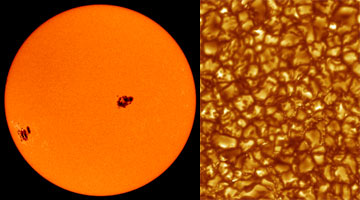
Most of the energy we receive from the Sun is the visible (white) light emitted from the photosphere. The photosphere is one of the coolest regions of the Sun (6000 K), so only a small fraction (0.1%)
...more
Plasma is known as the fourth state of matter (the first three states being solid, liquid and gas).Matter in ordinary conditions on Earth has electrons that orbit around the atomic nucleus. The electrons
...more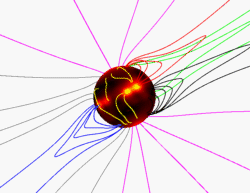
The Sun has a very large and very complex magnetic field. The magnetic field at an average place on the Sun is around 1 Gauss, about twice as strong as the average field on the surface of Earth (around
...more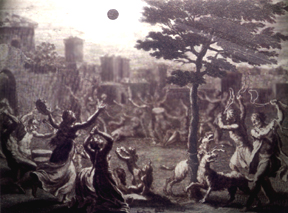
Eclipses have been monitored for centuries, but it was only recently that we understood what really occurs. Eclipses have always been fascinating to watch, but they weren't always welcome. For many years,
...more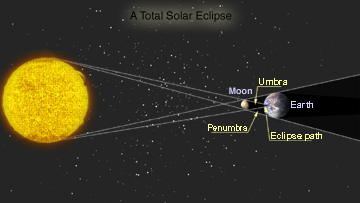
An eclipse of the Sun occurs when the Earth passes through the Moon's shadow. A total eclipse of the Sun takes place only during a new moon, when the Moon is directly between the Sun and the Earth and
...more
The gas in the solar corona is at very high temperatures (typically 1-2 million kelvins in most regions) so it is almost completely in a plasma state (made up of charged particles, mostly protons and electrons).
...more


